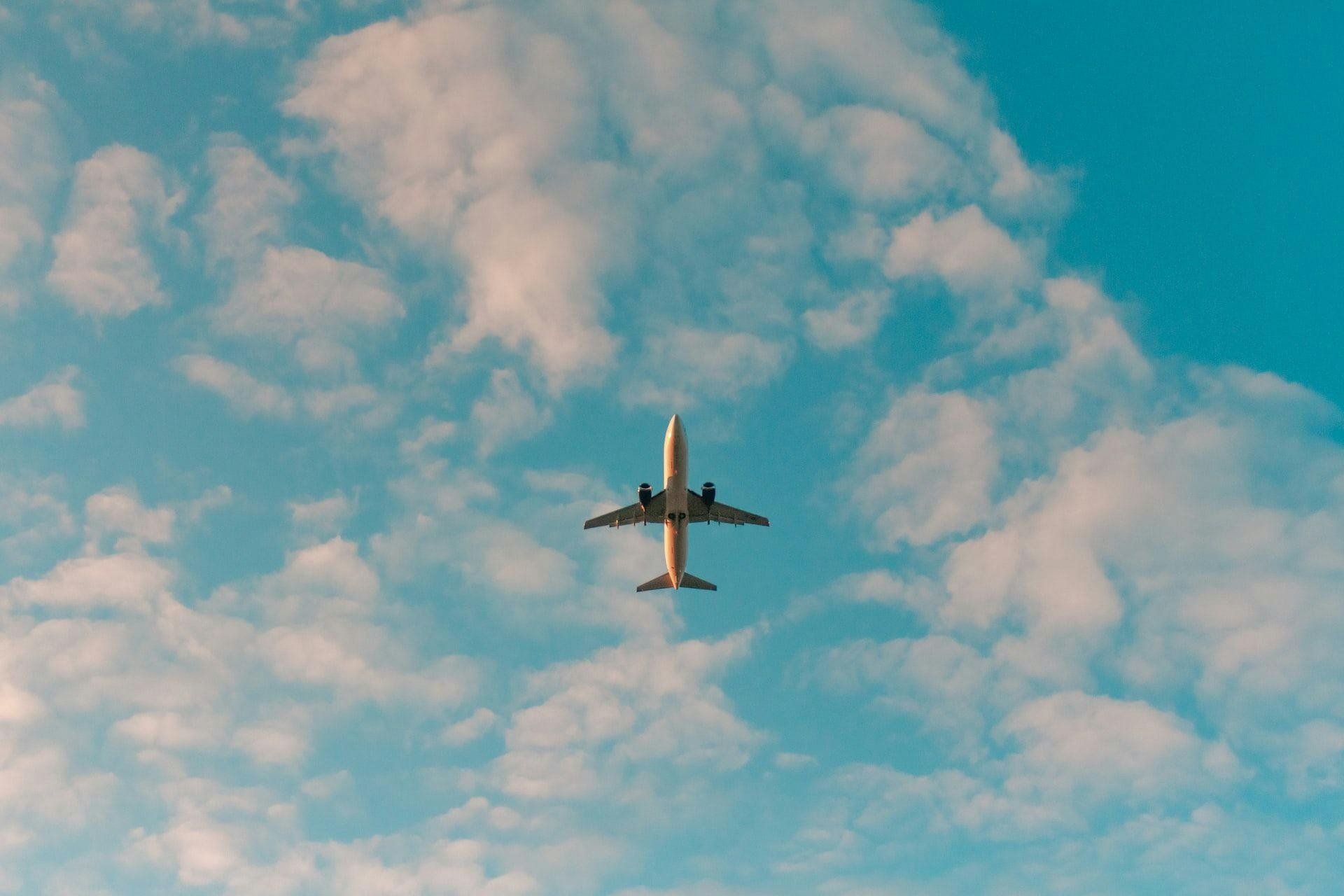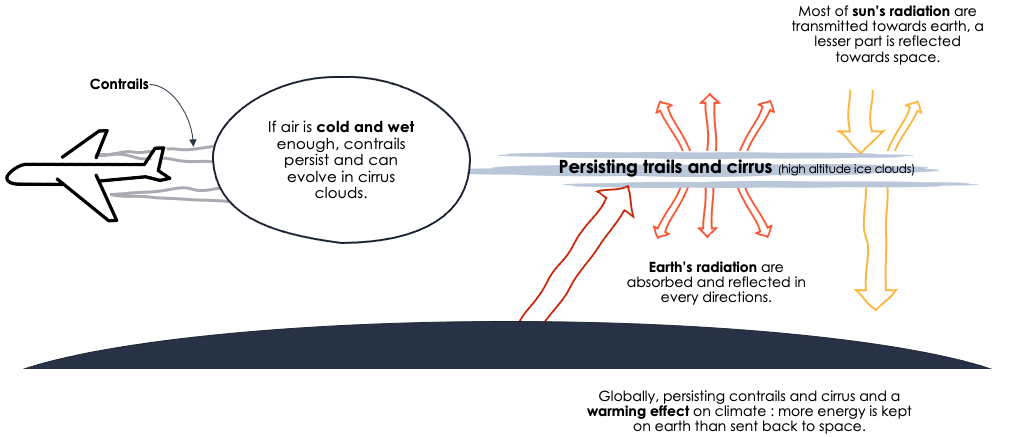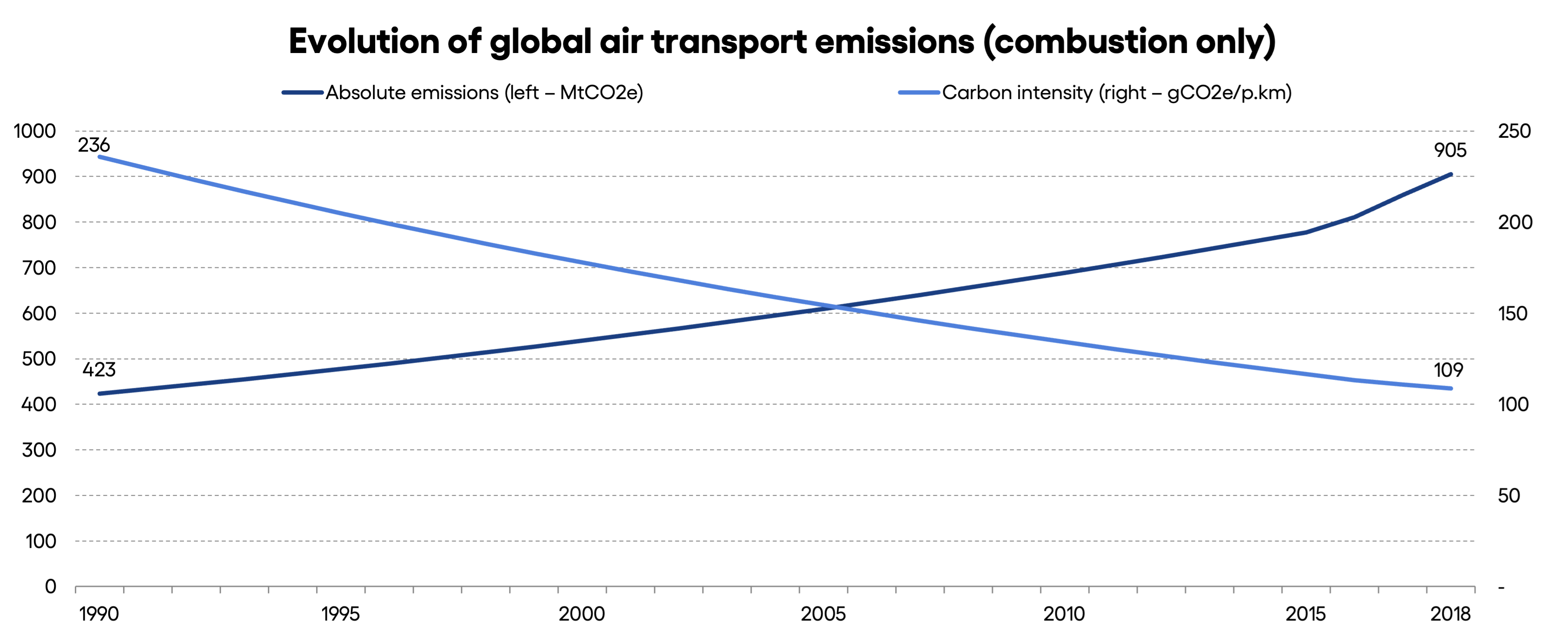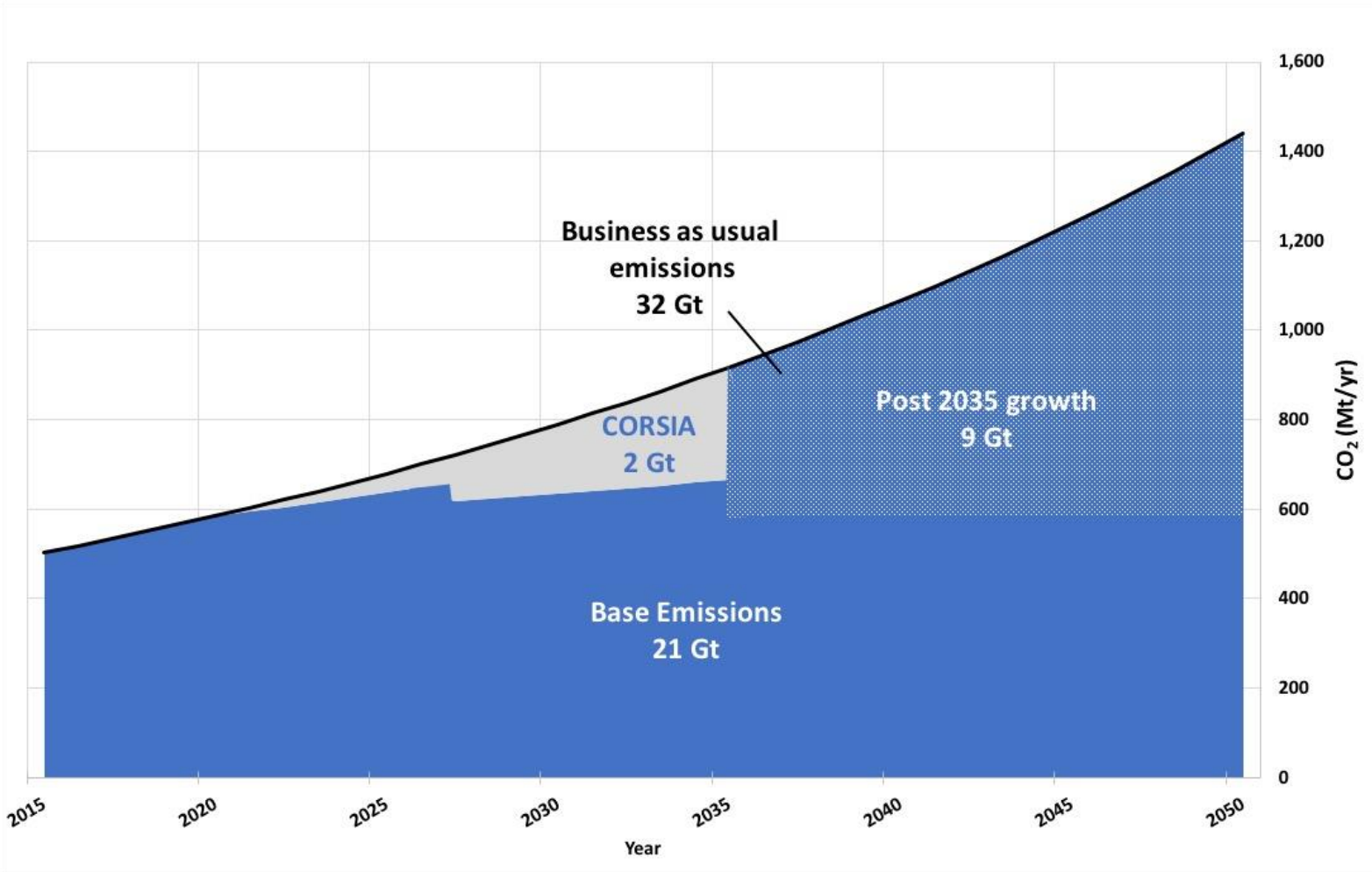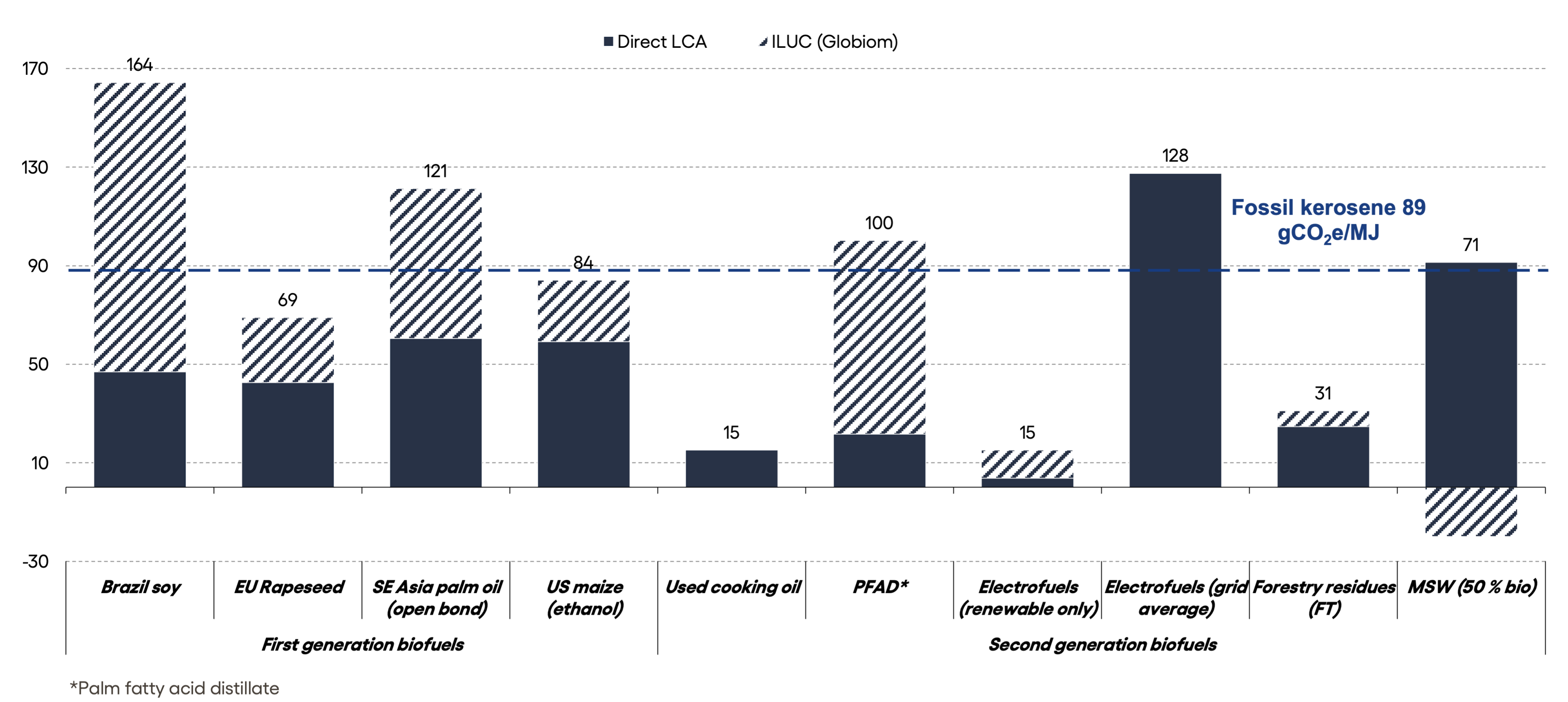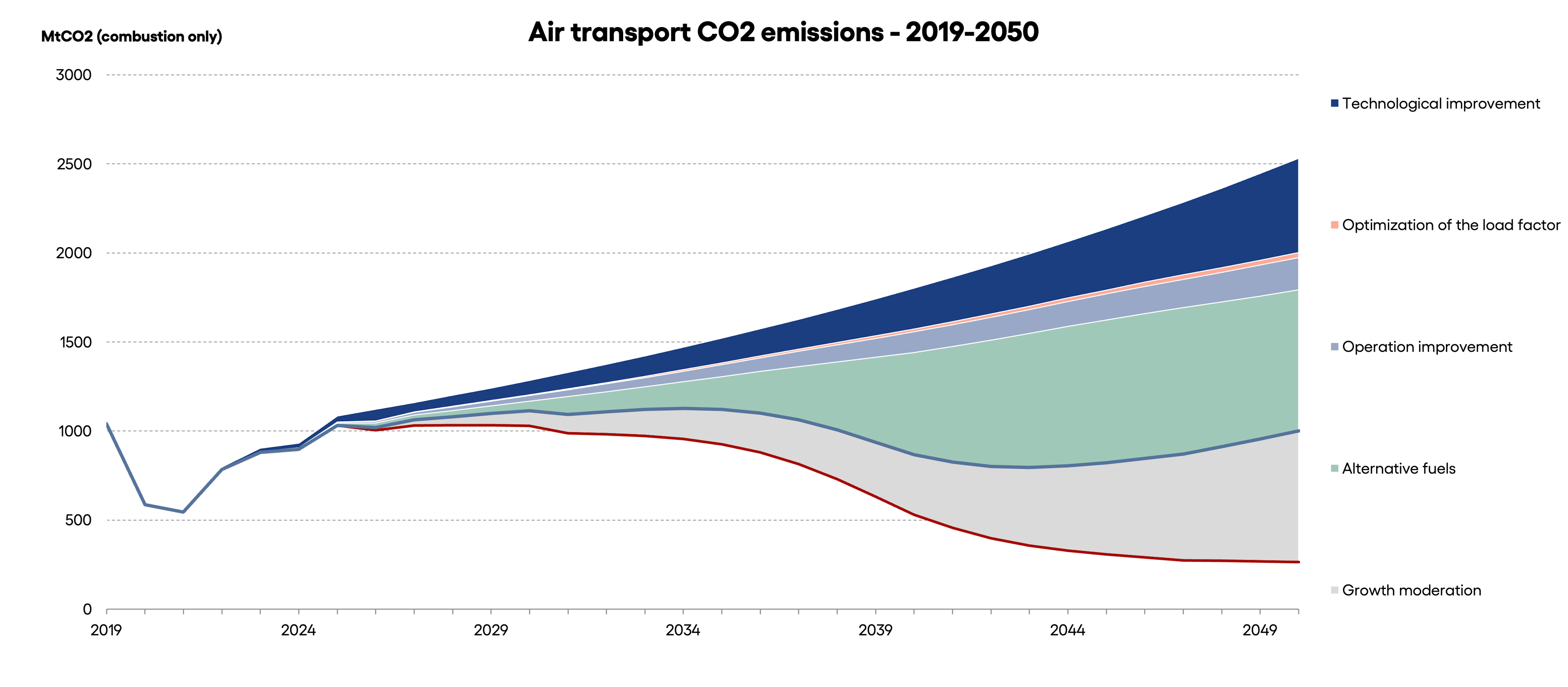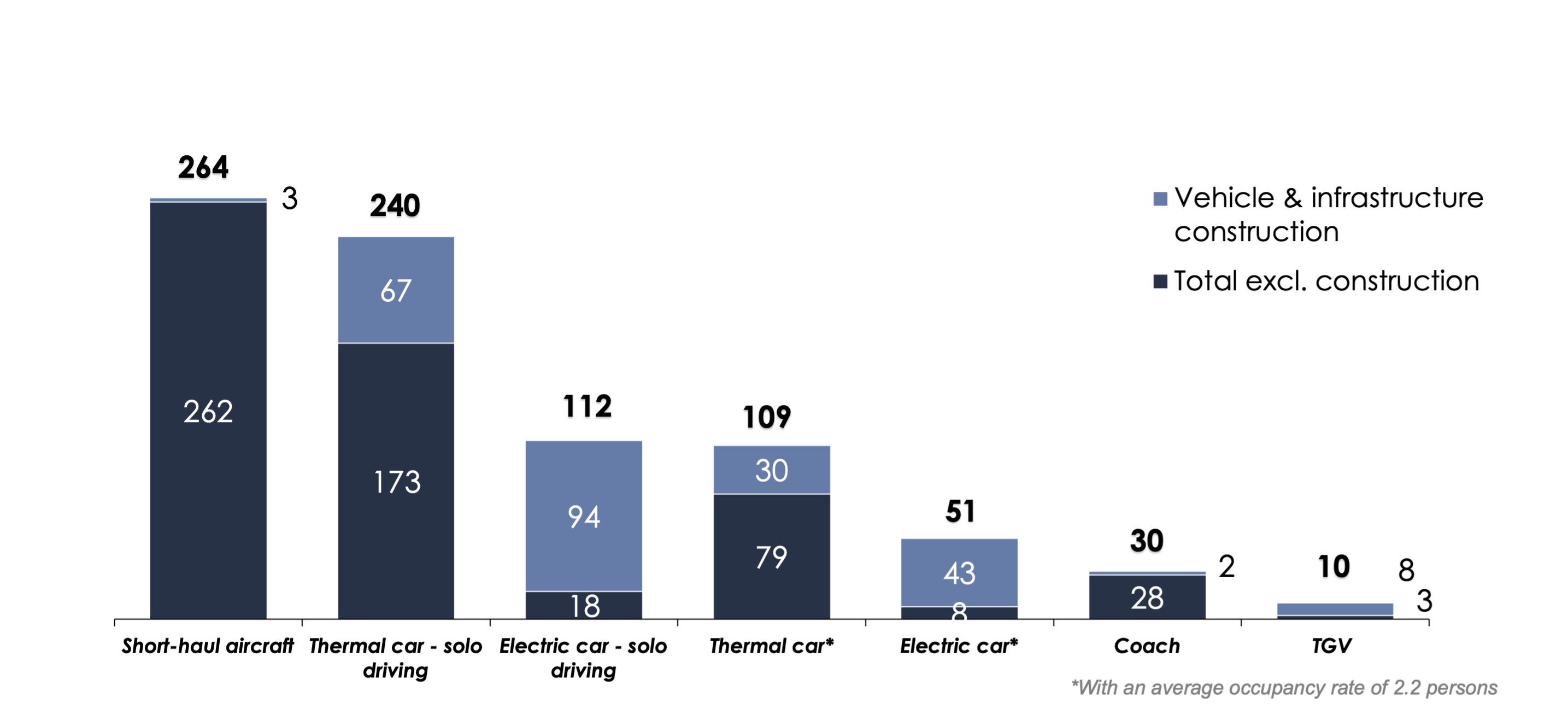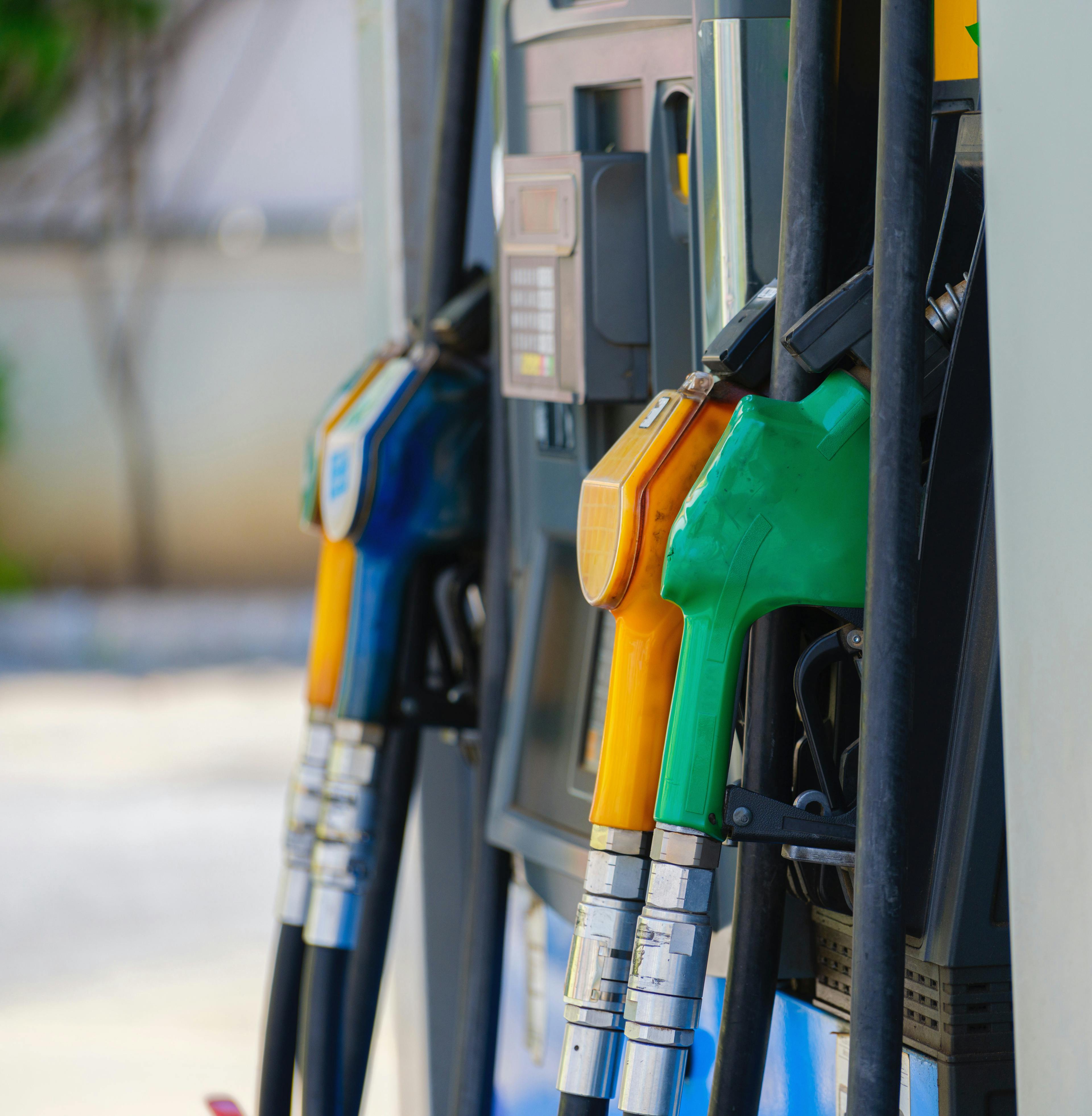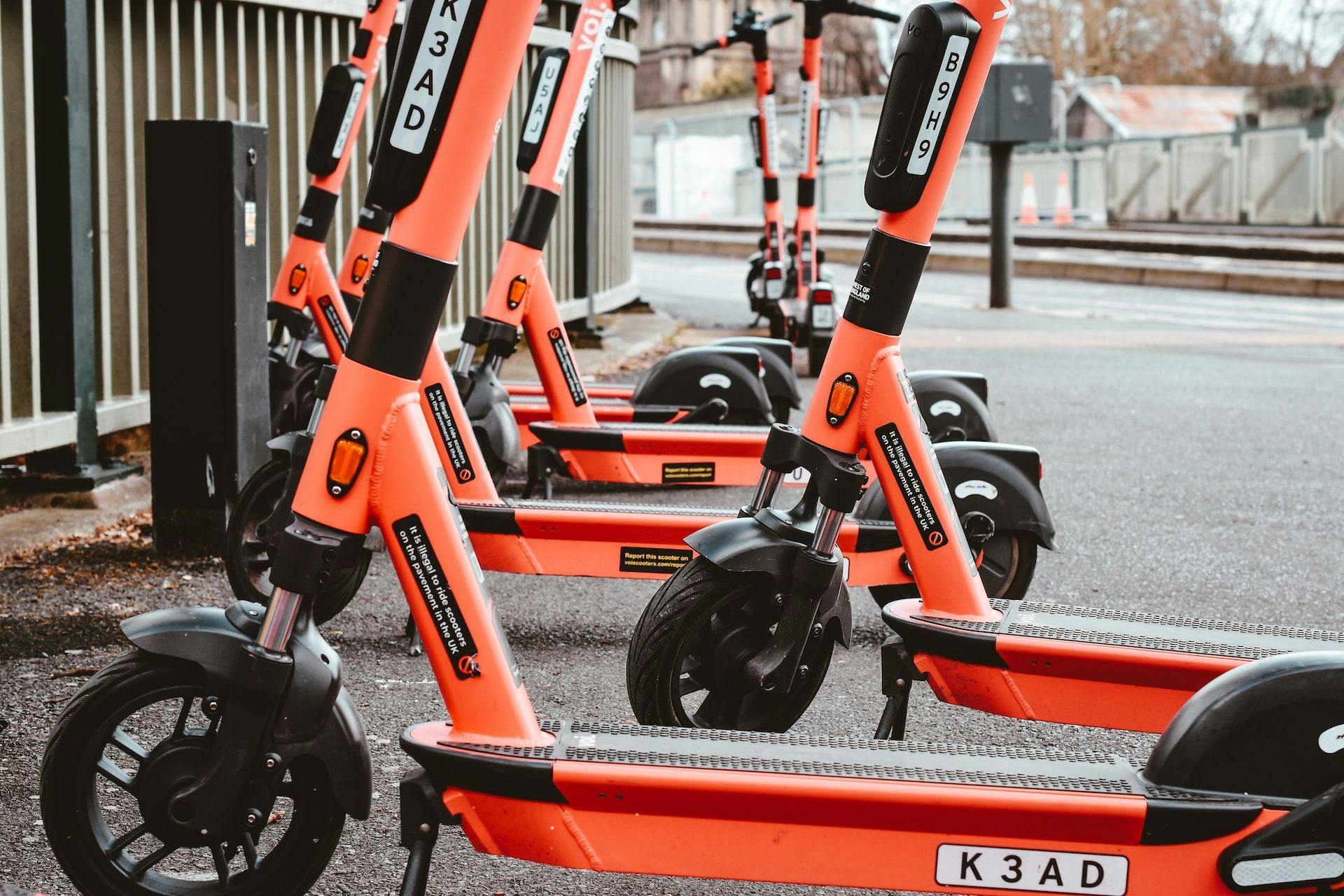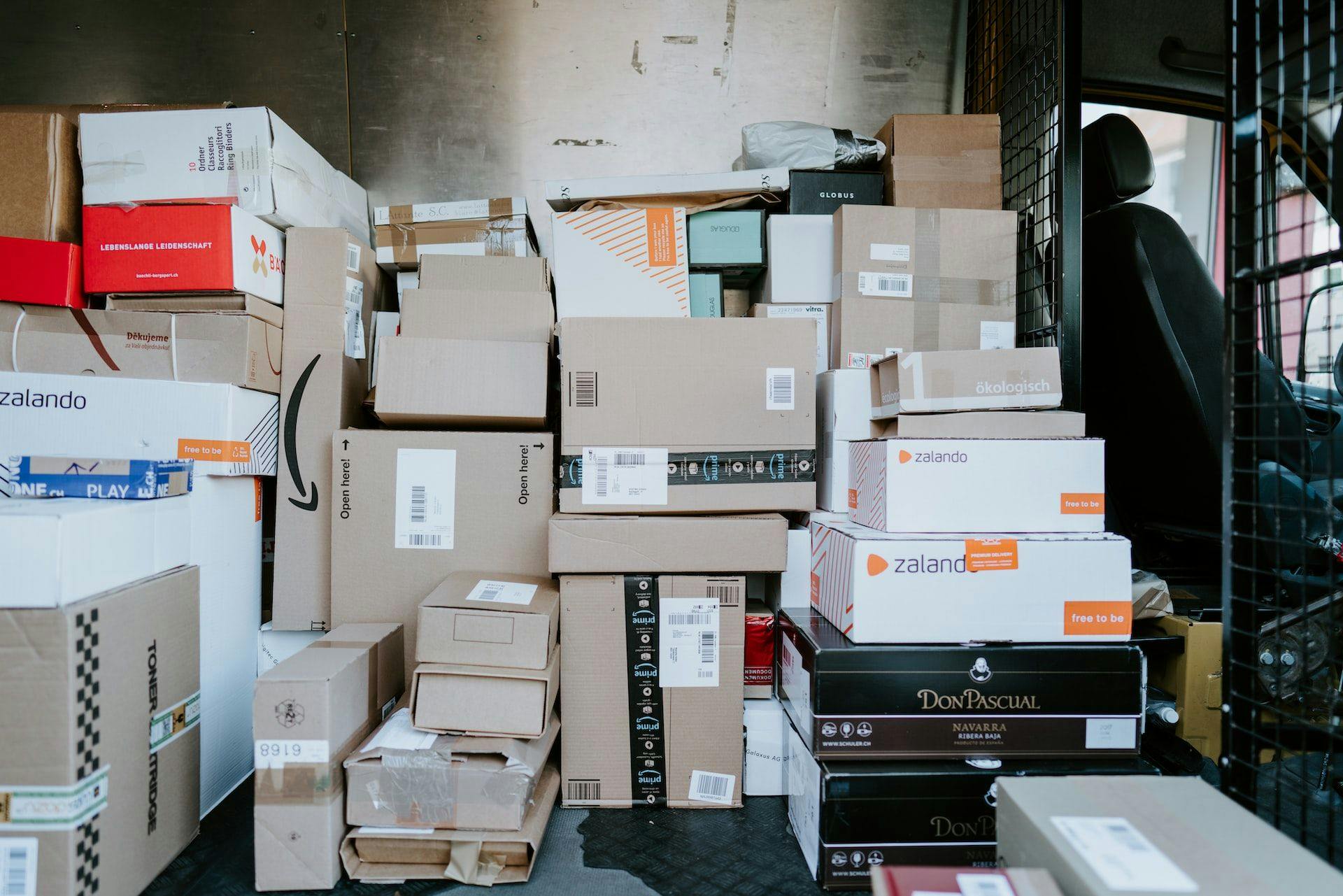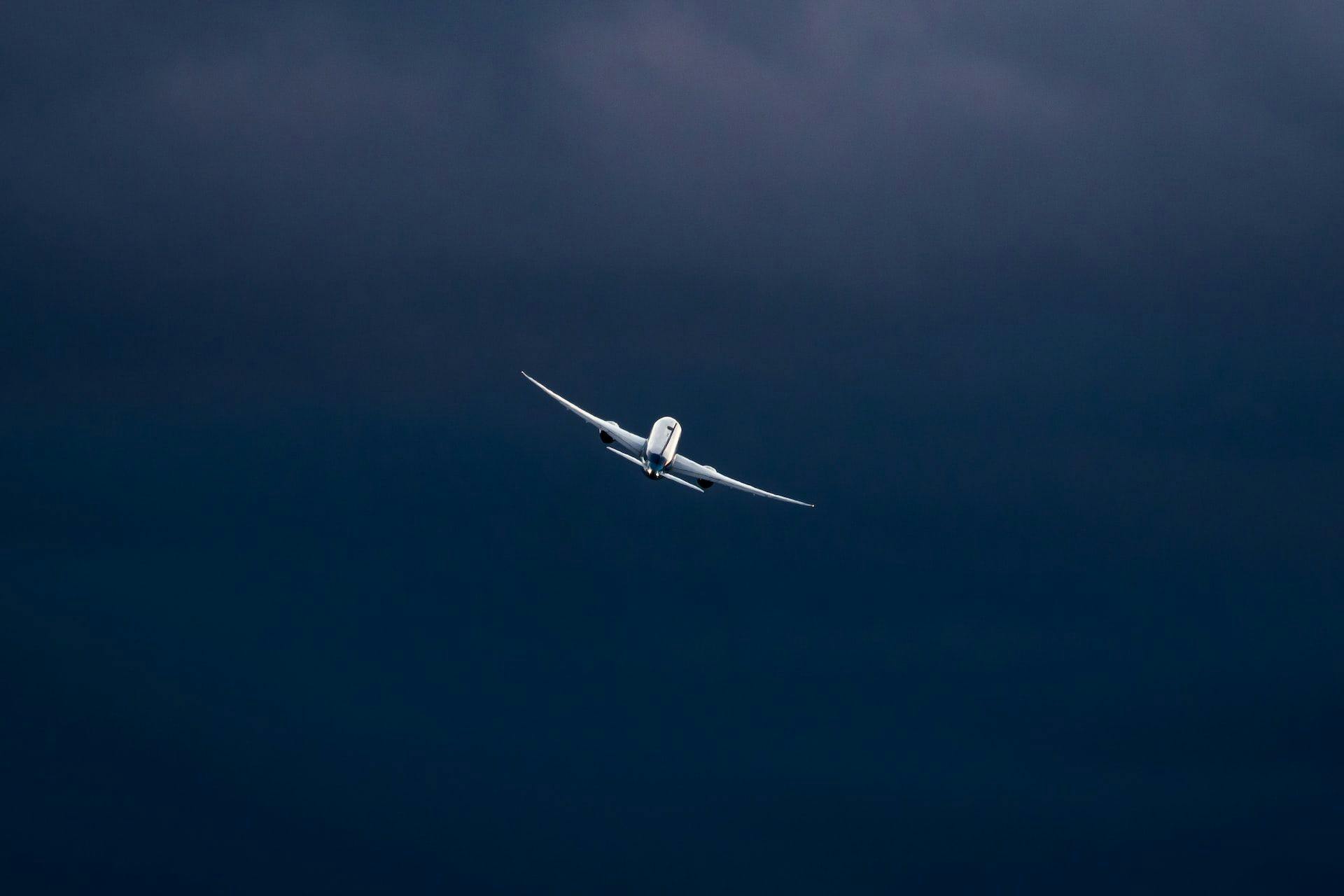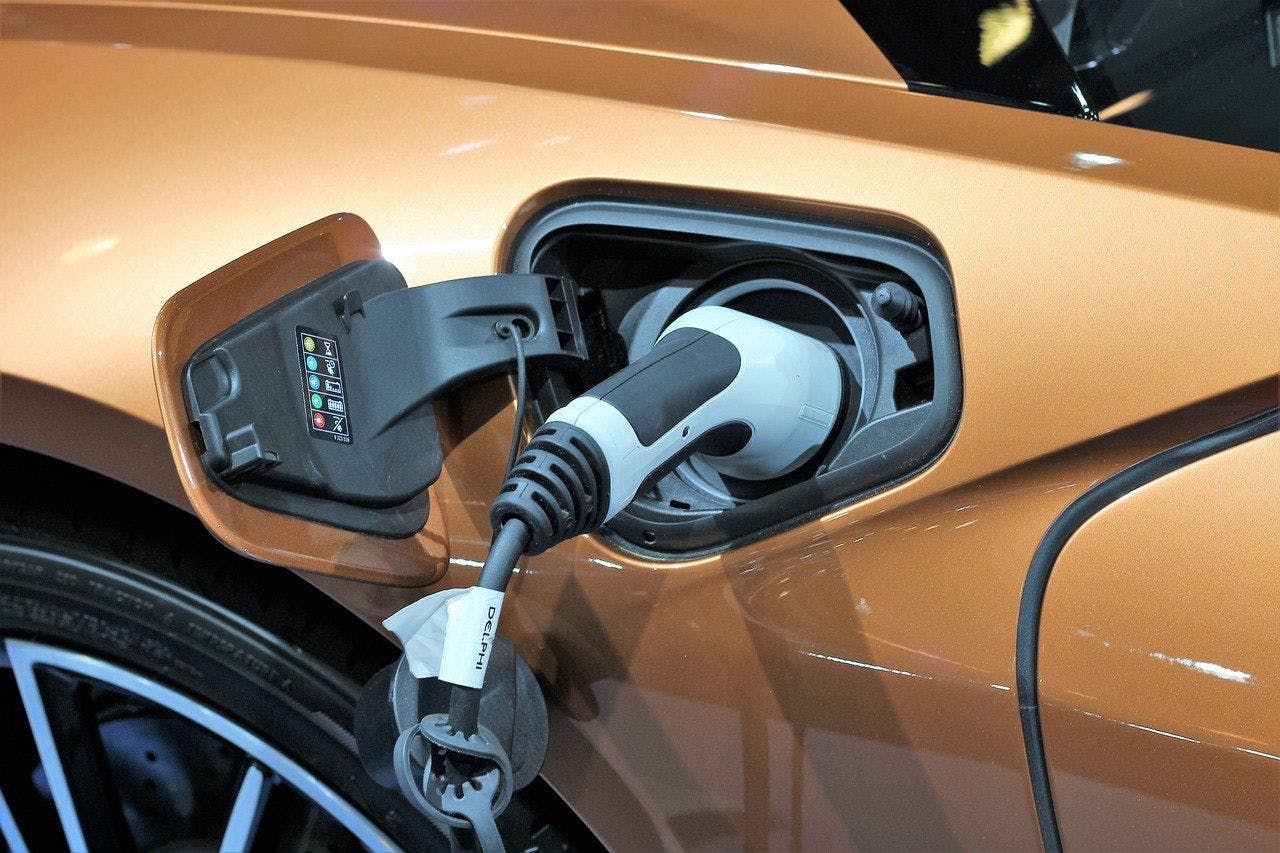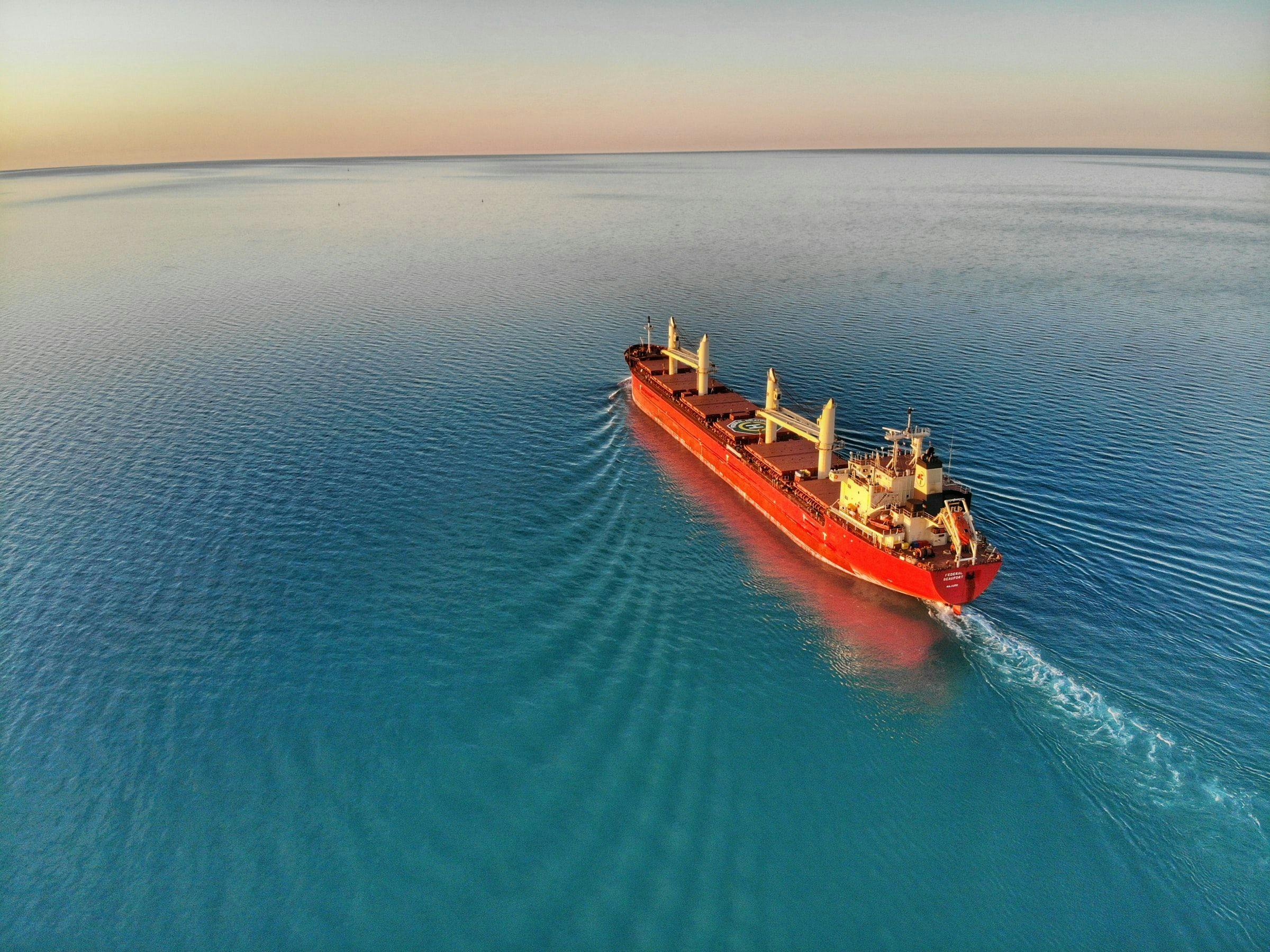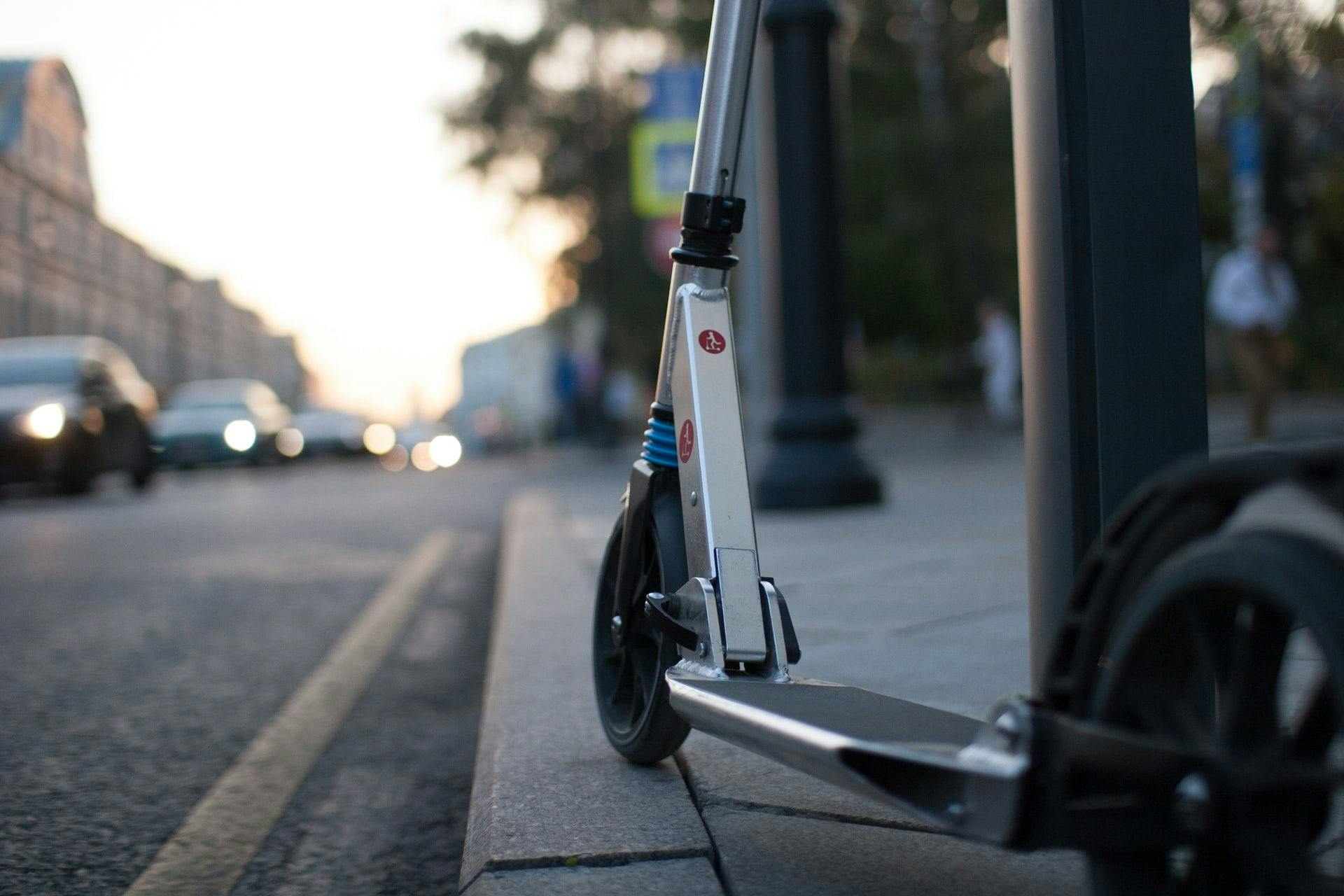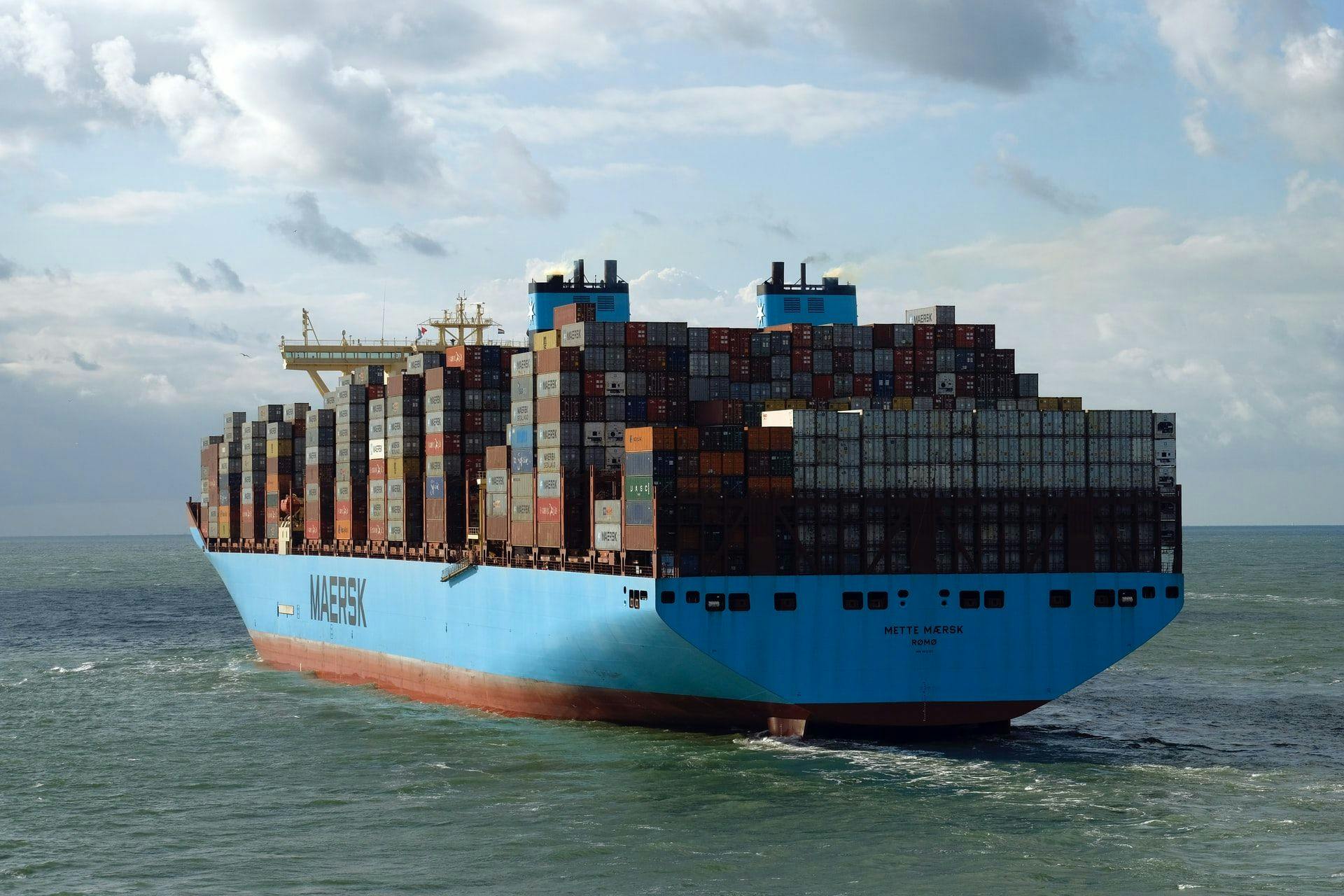Preconceived ideas on aviation and climate
From its beginning, aviation has been a subject of dreams and fears, raising strong interest in society. It is now caught up in the storm of climate transition. On one side, green aircraft is praised as the solution to every issue, on the other side “flygskam”, the “shame of flying”, emerged to denote a mean of transport to be banned. In this context, Carbone 4 aims to lighten up the debate by answering a series of questions with a scientific and quantified approach.
Links between aviation and climate change
1. Isn’t the impact of aviation on climate change minor?
Commercial aviation represented 2.6% of greenhouse gases emissions worldwide in 2018, and 5.1% of anthropic global warming between 2000 and 2018 taking into account non-CO2 effect. That corresponds to approximately 1 billion tons of CO2, equivalent in order of magnitude to the emissions of Japan (3rd global power and 5th emitting country). It is far from being insignificant.
Even more so when zooming on the individual scale: as an example, a round trip flight from Paris to New-York (1.7 tCO2e considering non-CO2 effects) represents 20% of the annual emissions of an average French person. Definitively significant. In view of the high awaited growth of the sector (approximately at least +3%/year according to estimates of the sector), its share in global emissions can easily explode and therefore weigh even more in climate change.
2. The non-CO2 effects of aviation are too uncertain to be considered…
Certain human activities can influence climate differently than by emitting greenhouse gases (GHG). Aviation is one of these activities: beyond GHG emissions from the combustion of fossil fuel, it has an impact through physical and chemical atmospheric processes. The main non-CO2 impact of aviation is the effect of the contrails (condensation trails) appearing in an aircraft’s wake. They are the well-known white trails one can spot in clear skies. These trails can persist in a sufficiently wet and cold air and evolve into cirrus clouds (ice clouds) when the meteorological conditions are met. These kinds of clouds have an overall warming effect on climate. They reflect towards earth the radiation it emits without no equivalent albedo effect (reflecting sun’s radiation towards space). But these clouds are too small and unstable to be considered in climate models. Therefore, the magnitude of their effect remains uncertain, but this uncertainty is evaluated, as in every scientific work. Latest studies show that their effect is equivalent to double or even triple the radiative impact due to GHG emitted by aircrafts. Evaluation of non-CO2 effects is yet to improve, but their significance is demonstrated. By counting them to zero, one is sure to be mistaken!
3. And air cargo?
In 2020, air cargo represented less that 0.5% of transported goods in Europe but 10% of overall freight emissions. Indeed, on the distances for which it flies, a plane is 2 to 5 times more emissive than a truck and 200 to 400 times more emissive than a train or a cargo ship! With a stable share until the beginning of the Covid crises, goods air transportation has greatly risen since, especially with the development of online shopping. It has progressed by 19% between 2020 and 2021, and it’s a trend that should continue according to the international air transport association (IATA), an increase of emissions will follow.
Today, 70% of payload is transported in the cargo compartment of passenger aircraft. Cargos can be seen as a co-product of commercial flights, but it is a share that could decrease. Big transport companies and integrators plan to acquire more cargo planes (in average 2 times more emissive per ton) to remedy to the explosion of online retail responsible of the increase of the share of air cargo.
However, to put the subject back into perspective, freight accounts for 15% of aviation emissions, whereas the 85% remaining correspond to passenger transportation.
4. Should aviation fear the physical effects of climate change?
In comparison to other means of transport, aeronautics facilities has a relatively small infrastructure footprint: no railway, road, bridge nor tunnels. It would be easy to wrongfully conclude that aviation isn’t exposed to climate change’s physical impacts.
Most airports are located on coastal, low altitude zones, making them sensible to sea level rise. It is probably the first risk factor for the sector: submersion. 269 airports are already subject to this risk. In a 2°C scenario, respecting the Paris agreement, the number already rises by 30% in 2100. In a more pessimist scenario, this number could rise by 50% and affect 13% of global air traffic. The annual number of disruptions due to submersions would be multiplied by 18. These impressive numbers don’t even consider possible interactions between sea level rise and other climate hazards such as river floods or the increasing intensity of hurricanes and tropical storms.
Other climate hazards can also disrupt air traffic from running smoothly. The heat wave that stuck 50 planes to the ground in Phoenix (Arizona, USA) in 2017 was an illustration of the vulnerability of aviation to heat. No taking off on too short runways or with some types of regional aircrafts (hot air is less dense, reducing lift), and accelerated wearing of the tarmac with time. It raises the question of the future of some hubs, such as Dubaï, fourth global airport in frequentation in 2019…
The different levers available to decarbonize aviation
5. Hasn't aviation already halved its consumption since 1990?
Fuel cost is a very important expense item for airlines (20 to 40% of the operational cost depending on the company structure). They are therefore naturally driven to minimize fuel consumption. Thus, with new generations of aircrafts and operational optimizations (eco-piloting, on-board weight limitation), fuel consumption per passenger-kilometer has been divided by more than 2 between 1990 and 2018, and consequently carbon intensity as well.
However, carbon intensity (i.e. emissions per passenger.km) must not be confused with emissions in absolute terms! As air traffic has multiplied by 4.6 over the same period, total emissions have more than doubled. This reflects a phenomenon called the "rebound effect": as fuel is saved, flying costs less, and therefore we fly more...
6. Aviation already has its own tool to fight climate change!
Promoted as the standard-bearer of aviation's environmental commitment, CORSIA (for "Carbon Offsetting and Reduction Scheme for International Aviation") is a scheme whose aim is to "offset" any annual increase in CO2 emissions above a specific baseline (set at 85% of 2019 emissions) and thus contribute to the industry's commitment to "carbon neutral growth" from 2020 (CNG2020). It was adopted in October 2016 by the International Civil Aviation Organization (ICAO), for gradual implementation as of 2021, only for international aviation (more than 60% of global traffic). The scope of application also proposes exclusions based on certain criteria (total emissions < 10,000 tCO2, island countries, least developed countries, etc.).
In practice, this should force every eligible airline to buy "offsetting credits" on the voluntary carbon markets, up to the amount of emissions exceeding the defined baseline emissions. However, as there are (crucial) issues concerning carbon credit integrity (which is highly contested in this scheme, including by scientists) and the use of "offsetting" instead of emissions reductions (see our NZI framework), the implementation of this scheme means that operators are under little constraint. Indeed, it only covers additional emissions (emissions before 2020 are not included), on a limited perimeter, for voluntary countries or companies until 2027 (then mandatory until 2035). Currently, 81 States have volunteered (77% of international traffic), and the BRICS (Brazil, Russia, India, China, South Africa) are notably missing. It should be noted that it is possible to use SAF ("Sustainable Aviation Fuels") to reduce offset obligations, due to reduced emissions compared to conventional jet fuel.
CORSIA is long to set up, only concerns a very limited scope of emissions, is based on carbon offsetting and is also a tool that does not help aviation to reduce its emissions. For all these reasons, this scheme is not up to the challenge to really fight climate change. Moreover, if the European Union uses CORSIA voluntarily for extra-European flights, it still maintains the EU-ETS market for emission allowances on intra-European flights, while European airlines would have liked to see the latter abandoned and switch to 100% CORSIA. As the latter is much less restrictive than the European mechanism, one can understand their position...
7. Will hydrogen or electric aircrafts decarbonize aviation by 2050?
Flying airplanes using electricity or hydrogen is promising because these energy carriers can be produced in a low-carbon way.
In the case of hydrogen, this could reduce the carbon footprint by up to -65% (non-CO2 effects included). However, this remains highly speculative for the moment because many technological elements are not ready yet, while aviation has set targets for 2050, less than 30 years from now.
Hydrogen has a better energy density per unit of mass, but not at all per unit of volume: even in its liquid form (which requires cooling to -253°C!), it takes three times more space than kerosene, and also has greater safety constraints than the latter. Hydrogen therefore suffers from some of its physical characteristics, which also requires modifying the entire airport ecosystem and infrastructure (hydrogen production, storage, aircraft refueling, etc.).
In addition, Airbus recently announced its plan to develop a hydrogen-powered single-aisle aircraft that would enter service in 2035 at best and cover a radius of 1,500 km, i.e. a regional range, which corresponds to ... 6% of aviation emissions today. For longer-range aircrafts, we would have to wait until 2040-2045. And even with a lot of political will, it will take time for these breakthrough technologies to spread and have a significant impact on the global fleet, while the sector has set targets for 2050. The NGO ICCT estimates, for example, that hydrogen could contribute to the decarbonization of aviation by 6 to 12% by 2050, and even IATA considers that it would only represent one tenth of the fuel used by that date.
Regarding true electric power, the main concepts under study are focused on hybridization, not on 100% electric power (except for light aviation), because of the weight of the batteries, which is much too high for an aircraft. EasyJet's recent reversal in its decarbonization strategy (from an ambition towards electric power to a partnership with Rolls-Royce on a hydrogen engine) is an example of this trend...
8. Will we be able to continue flying like we currently do thanks to alternative fuels (known as "SAF")?
There are two types of Sustainable Aviation Fuels (also known as “SAF”) : biofuels produced from biomass and e-fuels produced from electricity, water and CO2 (synthetic electrofuels, or PtL for Power-to-Liquid).
Regarding GHGs, new fuels can reduce CO2 emissions by replacing fossil kerosene: combustion is counted at 0 thanks to CO2 storage upstream (plant growth, use of captured CO2), and by taking into account processing and transport emissions, a reduction of up to -70/80% is obtained for bio-kerosene, or even more for future synthetic kerosenes with CO2 capture (still at the R&D stage). On the other hand, CO2 is not the only element that disturbs the atmosphere (see question n°2): these new products (i) do not have an impact on NOX or water, because it is the same type of combustion, and (ii) contrails, although reduced by the lesser presence of aromatics in the fuel, remain present. Thus, the reduction in non-CO2 effects would only be about 12%, which translates into an overall reduction of up to 50% in climate impact.
In terms of production, biofuels represented 0.01% of the fuels used in aviation in 2018, and several physical, economic and technological barriers will most likely not allow them to surpass conventional kerosene by 2050 according to the ICCT. Sustainable biomass resources to produce biofuels are also limited and will be contested between different means of transport (maritime, rail, road) and different sectors (heavy industry, energy production, cosmetics, etc.). Even if the quantity of sustainable biomass is sufficient if we only consider aviation, it is not sufficient if we take into account all sectors. Moreover, the massive production of intensively cultivated biofuels has other environmental consequences and can weaken the soil, threaten biodiversity or alter the water cycle.
For e-fuels, their production from low-carbon electricity and their use in an aircraft turbojet has a low energy efficiency of 20-25%. And here too, there will be competition for uses of decarbonized electricity, the production of which will not be infinite.
Finally, biofuels are currently 2 to 5 times more expensive than fossil kerosene, and even in industrial production, biofuels as well as e-fuels should remain the most expensive (excluding carbon tax or other financial mechanism) and therefore increase the price of airline tickets.
The development of SAFs is therefore an important but insufficient lever for aviation: on the one hand, the different types of SAFs have different carbon footprints, sometimes greater than that of fossil kerosene, and on the other hand, resources needed to produce them are limited and coveted by other sectors.
9. Can aviation meet its climate targets without reducing growth?
In order to keep global warming below +2°C, the aviation sector has set a target of zero net emissions (with ~135 MtCO2 of residual emissions, i.e. a reduction of 85%, according to ATAG). This challenge will be all the more ambitious given that it anticipates a growth in passenger traffic ranging from 3.1% to 3.6% per year, i.e. a multiplication by at least 2.5 by 2050.
To decarbonize its activity, the civil aviation sector can rely on 3 different levers:
- Energy efficiency (improvements in aircraft and operations)
- Decarbonization of energy carriers (alternative fuels, low-carbon hydrogen, etc.)
- Activity volume (passengers and freight)
Technological improvements with new generations of aircraft are contributing to the decarbonization of the sector by substantially reducing fuel consumption per passenger (by 15% to 30% between two generations). Breakthrough programs, potentially using other energies such as hydrogen or electricity, could achieve fuel savings of up to 50%. However, they are not expected to start production before 2035 for short/medium-haul aircraft and 2040-2045 for long-haul aircraft, which means that they will only be able to make a small contribution to the 2050 objective (see question 7). Thus, even with an accelerated renewal of the world fleet in 15 years (compared to ~22 years on average today), this lever will hardly be able to contribute to more than 25% of the decarbonization effort required for 2050, not to mention the financing constraints imposed on airlines and the induced rebound effect (see question n°5).
At the same time, improving load factors (already high, between 80 and 85%) to 95%, eliminating part of the Business class in favor of more passengers, as well as the electrification of ground operations and optimal flight paths, could make it possible to achieve up to 8% of the decarbonization effort.
Finally, the development of alternative fuels (SAFs) will be the major complementary lever that could make it possible to achieve more than 35% of the total decarbonization objective, according to our analyses. However, the supply of these sustainable fuels will remain limited (see question 8).
Therefore, even summing up the optimistic contributions of these levers, aviation would still need to reduce its emissions by an additional ~30% to achieve its decarbonization objective. Sufficiency, i.e. traffic moderation with lower, or even zero or negative growth if the previous levers do not have the estimated potential, is the only remaining lever to achieve this transition. For short flights (in 2019, 17% of civil aviation emissions are linked to flights of less than 1,000 km, with regional and medium-haul aircraft, according to the ICCT), there are alternatives with lower carbon impacts, such as bus or train in regions where the rail network is already well-developed (e.g., Europe, China, Japan). More generally, it will be crucial to question the real need to travel, for professional purposes and more importantly for private purposes.
All levers, both technological and behavioral, will be key to decarbonizing air transport: forgetting one, such as the effort to limit traffic, makes the decarbonization plan unsustainable.
Even in the very optimistic case of a strong development of technological levers alongside a production of alternative fuels equal to the current kerosene consumption (~300 Mt), limiting growth will be essential to respect the carbon budget.
10. Can we continue to fly by offsetting?
The purchase of carbon credits is not necessarily bad from a climate point of view (although all credits are not equal!) because they allow to accelerate the action towards the collective net zero. However, this has nothing to do with air travel: this contribution can be considered in a decorrelated way, and it has no impact on the flight emissions. It is therefore misleading to try to create a link between the emissions induced by an airplane flight and the avoided or captured emissions associated with the funded project, this being true for any type of "offset", and not only for air travel (for more details, see our NZI framework).
Likewise, a company may decide to fund projects to avoid or capture CO2e emissions in order to contribute to carbon neutrality, but these actions do not reduce its carbon footprint.
Thus, in the case of a passenger who, while being aware of the climate emergency, wishes to take the plane, the most consistent approach is to first reduce his or her use of planes (in terms of kilometers flown), then if needed to choose the least emissive flight (direct flights, new generation planes), and to finance the purchase of sustainable fuel. However, carbon credits are not a reduction lever. Their purchase remains a good action but is separate from travel.
11. Is it better to travel by plane or by car, even alone?
We often hear that an airplane consumes about 3L per passenger per 100 km while a car rarely uses less than 5L per 100. From this perspective, the question of which vehicle is the most emissive is quickly answered. But fuel consumption is not enough to evaluate the carbon footprint of a means of transport. Including non-CO2 effects (see question 2), 260 gCO2e/passenger.km are emitted by an airplane compared to 196 gCO2e/passenger.km for a thermal car with only one passenger (source: Carbone 4), while long distance trips carry 2.2 passengers per car on average.
The other point that is often made, especially against trains, is that the impact of infrastructure is not taken into account. Beyond the fact that it only makes sense to take them into account in the long term for the construction of new infrastructures (as airports or rails are not going to change until you make your next trip), one can see on the graph below that it does not change the carbon hierarchy of transport.
Solo-driving and air transport are the two most emissive means of passenger transport. In France, if one hesitates between the two, it is generally because one has forgotten to look at the alternatives: trains (TGV) or buses cover the main national roads and emit much less than airplanes, solo-driving or even car-sharing.
12. Is it better to travel in economy class rather than in business class?
For each passenger, the carbon footprint of a flight increases when the occupancy rate of the plane decreases (because each passenger carries a larger share of the flight's emissions). And the larger the seat, the more space it takes up in the aircraft cabin, contributing to a decrease in the number of passengers allowed on a plane. In addition, first class and business class cabins are usually less occupied than economy class. Emissions per passenger in business class are therefore about 3 times higher than in economy class, and up to 6 times higher in first class, with a ratio depending on the amount of space occupied in the cabin. Thus when choosing to travel by plane, travelling in Economy class rather than Business or Premium Economy will significantly reduce the associated carbon footprint.
It should be noted that this optimization with very dense and filled cabins has been well adopted by low-cost airlines, primarily for economic reasons, and they thus have the lowest CO2e emissions per passenger. However, the issue is different with low-cost airlines, as their business model is based on an increase in traffic. With their unbeatable prices, they are certainly stepping on the toes of historical airlines by conquering their market share, but they rely above all on attracting new passengers who are now tempted by going on weekends at the other end of Europe for a few tens of euros, or even at the other end of the world for a few hundred euros. Their business model is therefore no less harmful to the climate.
13. Is buying SAF (Sustainable Aviation Fuel) with your ticket a good idea?
Biofuels can indeed significantly reduce the emissions of flights, thus buying SAF can really reduce the carbon footprint of a trip, unlike carbon offsetting.
Currently, the supply of biofuels remains very limited (and the supply of e-fuels almost non-existent), and airlines buy very small quantities compared to their kerosene consumption, equivalent to only a few percent. Moreover, biofuels are poured into airport fuel tanks and mixed with fossil fuel for safety reasons (an aircraft cannot carry more than 50% SAF at the moment), and then distributed to airlines independently of their SAF purchases. The link between biofuel purchased by a passenger and fuel used during the flight is essentially conventional and not physical. However, unlike electricity, SAF are storable, so there is no issue with spatiotemporal consistency: a liter of SAF produced in May in Spain can be used in September in France, and replace a liter of kerosene. Therefore, this conventional link, although less rigorous than a physical link, does not diminish climate benefits coming from the SAF.
Nevertheless, as mentioned in question number 8, although the use of biofuels is an important lever, the amount of biomass remains limited, and the development of this energy vector will require combining it with a decrease in the number of flights.
14. How can companies play a role?
Business travel accounts for a significant share of aviation emissions, for example 30% of travel in Europe. Companies must therefore do their part to reduce the impact of their trips.
Several solutions exist. The first and most efficient one is to travel less by plane. The experience of Covid-19 lockdowns has been instructive on this matter, demonstrating that many business trips can be avoided and that videoconferences are adequate for the majority of needs. It is also necessary to prioritize other modes of transportation such as the train whenever possible: many companies encourage or even require their employees to use rail when the trip is short, for example for a duration of less than 4 hours by train. If air travel is really necessary, certain actions can be taken to reduce the carbon footprint, such as the choice of airline, the shortest route possible, or the purchase of biofuel (see question 13).
In order to tackle this issue and get their employees on board (no pun intended), companies must ensure that their service providers - travel agencies and self-booking tools - provide them with the means to take action: clear carbon information for employees who choose their mode of transport and book their ticket, and relevant management indicators for the purchasing or sustainable development departments. To go one step further, there are many options: raising employee awareness, implementing strict travel policies, gamifying carbon footprint via individualized meters, or even setting up an internal carbon price.
15. Is air transport for the elite only?
At a global level, aviation remains reserved for a very limited number of people.
Here are some figures to illustrate: less than 1% of the world’s population is responsible for more than 50% of commercial aviation emissions. This is not surprising considering that 80% of the world’s population has never flown. Among those lucky enough to be able to travel by plane, the concentration of emission is also very high: 2% of travelers represent 40% of emissions.
The observation is the same in France. If, in average, 33% of French people never fly, which is less than the world average, this share fluctuates with incomes: it increases to 47% for those earning less than 900€/month and decreases to 19% for those earning more than 2 500€/month, the reason mentioned being mostly the price. And if the drop in ticket prices with the development of low-cost airlines has allowed the lowest deciles to travel a little more, it has also allowed the highest deciles to travel more frequently.
Other fast modes of transport such as TGV are the prerogative of the most affluent categories (upper socio-professional categories (CSP+) represent 48% of TGV users for 10% of the French population), with nevertheless a much lower carbon footprint. While air travel may not be the only elitist mode of transportation, it is the most carbon intensive.
16. What are the avenues for an economically fair access to air transport?
In the frame of the Paris Agreements, where emissions of all sectors, including aviation must be reduced, the question arises of how to fairly distribute the effort among citizens. How can the aviation carbon budget be distributed fairly? In order to aim at a system that does not indiscriminately affect all users with a simple price increase, while penalizing more strongly the modest households, two particularly interesting tracks have been identified:
- The first one is the Frequent Flyer Tax. This is the exact opposite to the Frequent Flyer Program (Airline loyalty program). It consists of a progressive taxation of tickets per person over a given period (e.g. 3 years), each additional flight being taxed more heavily than the previous one. The objective is to tax more heavily the wealthy elites who represent the largest share of emissions (see question 17)
- The second is quotas. This measure, which can take various forms (limitations of kilometers traveled, of trips over one or more years), aims to free people from their wealth to ensure equal access to Icarus’s dream for all citizens.
17. Private jets: real impact or just a symbol?
After a controversy during the summer of 2022, the issue of private jets has fallen back into relative obscurity (and we are struggling to identify the concrete next steps of the Transportation Minister Clément Beaune who announced to regulate the sector). The question raised is however major: Should private jets flights be regulated?
The answer is not black or white. On an individual scale, yes, a private jet flight emits a lot: 5 to 14 times more than a commercial flight, and moreover, most often over distances that can be easily covered by train (50% of European business jet flights cover less than 500km). However, on the scale of the aviation sector, private jets only represent about 2% of the emissions in France. The question of regulation is therefore not primarily a question of direct impact, but a question of social justice. Indeed, without action on these high-carbon luxury products, it will be difficult to make ordinary people accept to moderate their use of air travel, or more generally to adopt low-carbon behaviors.
Glossary
ICAO: International Civil Aviation Organization, a UN agency that regulates international aviation
IATA: International Air Transport Association, a private trade organization and airline lobby
ATAG: Air Transport Action Group, a coalition of organizations and companies from the airline industry and lobby
IEA: International Energy Agency, an autonomous agency of the OECD, producing energy and climate transition scenarios
ICCT: International Council on Clean Transportation, an independent non-profit NGO
T&E: European Federation for Transport and Environment, a European organization uniting about fifty NGOs active in the field of transport and environment.
Contact us
Contact us about any question you have about Carbone 4, or for a request for specific assistance.
